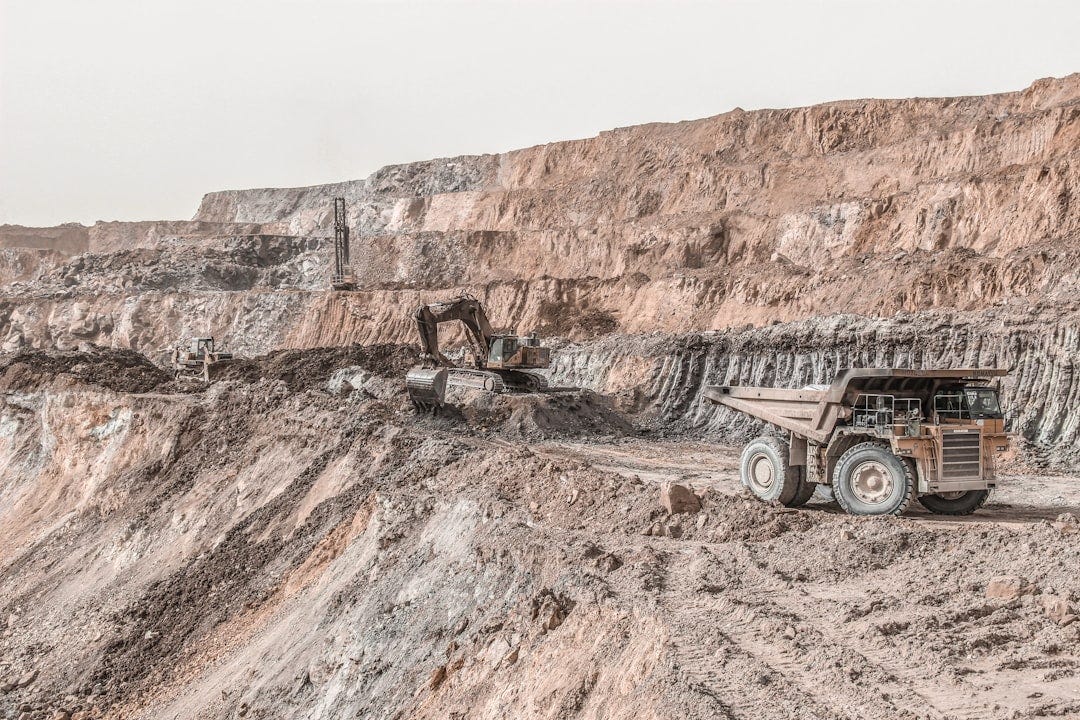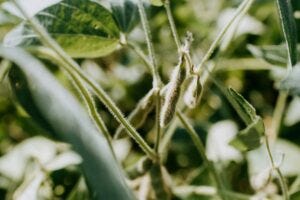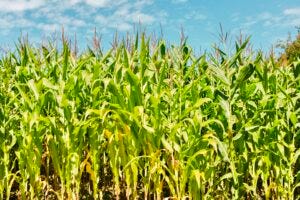The final straw which led to my quitting farming was fertilizer. Corn and soybeans need three main nutrients: nitrogen (N), phosphorus (P), and potassium (K). If you do not use these three, you might as well not farm. I tried to do it in my home garden, and it was a failed experiment.
Regenerative farmers argue if you use livestock and cover crops in the right way you will not need fertilizer. This is wrong. It might take a couple of generations, but the natural P and K will run out. It takes years until a farm can operate without synthetic fertilizer while using livestock.
Our operation was synthetic. Synthetic is a fancy way of saying the fertilizer was not created naturally. It was mined if phosphorus or potassium, or produced via the Haber-Bosch process if nitrogen. These farms have not had cow or pig poop for many years. These synthetic fertilizers are applied every two years on a farm for a two-year rotation. This is what Dad did. It’s possibly not the right way, but a way. My nutrients came from the co-op.
The co-op sources the different fertilizers from large corporations like CF Industries, Koch Industries, Nutrien, or Mosaic. All these companies have considerable market share in highly consolidated markets. For reference, when the top five firms account for more than 60 percent of market sales, an oligopoly can exist, according to the Federal Reserve Bank of St. Louis Federal Reserve. An oligopoly can lead to higher prices, anticompetitive behavior, little incentive to innovate, and other issues.
According to Farm Action (all of these facts come from Farm Action), as of 2021, Mosaic produces over 64% of the phosphate rock and around 80% of the phosphate fertilizers manufactured in North America. They are estimated to control over 90% of phosphate fertilizer sales to U.S. farmers. On the nitrogen front, CF Industries captures the nitrogen industry by having 80% of ammonia, 56% of urea and 52% of UAN fertilizer sales made to American farmers.
When it comes to potassium, Nutrien produces between 55% and 60% of the potash in North America and 40% of potassium fertilizer sales across Canada and the United States. Mosaic helps in this duopoly by producing 35% of North America’s potash output and controls an estimated 35% of the continent’s potassium fertilizer sales.
Iowa tried to help the nitrogen industry by subsidizing a plant. It did not work. Another large player in the fertilizer industry, Koch, bought them. The sheer market power of all these firms can swallow up competitors even when the government tries to help. Incentives will not create market share. Antitrust will, as evidenced by the past.
During the nadir period of antitrust in the United States in 1980, 56 firms produced nitrogen ammonia. Twenty-five companies mined phosphate rock while 14 extracted potash. No firm controlled an outsize share of either mineral’s output. By the end of the decade, less than 30 nitrogen firms, around 15 phosphate rock firms, and only eight potash firms remained in the United States.
The lack of enforcement of antitrust laws and pro-competition law policy led to disastrous results by 2012. Four companies, CF, Koch, PotashCorp, and Agrium, represented over 75% of domestic nitrogen ammonia production. Mosaic, PotashCorp, and CF, in descending order, controlled approximately 90% of the country’s output of both phosphate rock and phosphoric acid. In 2016, PotashCorp and Agrium combined to become Nutrien — the largest fertilizer manufacturer in the world, with two-thirds of North American potash fertilizer capacity.
In 2021, my fertilizer cost was slightly below $75/acre, and the average corn and soybean prices were $5.70 and $13.33, according to my tracking. In 2024, my fertilizer cost was slightly below $140/acre. Corn and soybean prices were $4.15 and $11.33 as of August 2nd. It has mostly declined since then. When corn and soybean prices are down, the price of fertilizer should be down. Farmers are not purchasing as much of this input. This is supply and demand.
After crop prices shot up due to the world opening after the pandemic, due to a supply scare and weather issues, farmers made higher profits in 2020 and 2021. In 2021, fertilizer prices also rose. The consolidated industry blamed the war in Ukraine and supply chain issues for the higher prices. This was not true.
In 2021, Nutrien’s gross manufacturing profit margin was up 669% from 2020 while cost of goods sold had increased by only 58%. During this same year, CF Industries’ cost of sales increased by 125% but their gross margin was 298%. In 2022, Mosaic improved their profits over their 2021 profits by 120%, Nutrien by 142%, and CF by 212%. These corporations made moolah while farmers were extorted.
CF, Mosaic, and Nutrien are “price leaders” in their respective U.S. markets. Neither importers nor competing domestic producers can challenge these companies’ price setting. According to Farm Action, a fertilizer importer, IRM, described how CF set UAN prices. Their representative talked about how they waited on CF to come out with their prices. Until their customers knew what CF was going to do, their customers would not decide. They did not want to be undercut by CF on price.
These companies are not at the mercy of the market. They are the market. For example, CF can readily shift as much as half of the nation’s ammonia and urea output from the domestic to the export market and vice versa any time it wants to ensure its dominance. Nutrien and Mosaic also have this ability. They can coordinate their potash capacity, which is 90% of total North American capacity. These companies can fix and manipulate the supply of potash fertilizers available to North American buyers at their discretion. The phosphate fertilizer output is operated the same way, since these companies have over 90% of U.S. capacity. With the ability to shift supplies between the domestic and export market and vice versa, these companies can again set prices.
And where does this leave a farmer like me?
.
Sean Dengler is a writer, coach, and “retired” farmer, who grew up on a farm between Traer and Dysart. While he now lives in Urbandale, you can read him in the North Tama Telegraph and on Substack. You can reach him at sean.h.dengler@gmail.com.
Take a look at the excellent writing by my colleagues in the Iowa Writers Collaborative. We provide your alternative Sunday paper and a mid-week edition called the Flipside.






Wow! I'm not sure I understood everything you said. Well, I'm pretty sure I didn't. Are we talking unbridled, deregulated, global, corporate capitalism? Could other models, cover crops, manure, work over time if there was a collective consensus change? (I know. If only pigs could fly.) Do permaculture practices only work on a small, local scale? If you were to envision sustainable agriculture that could feed all those who need feeding, what would it look like? Thanks for this analysis!